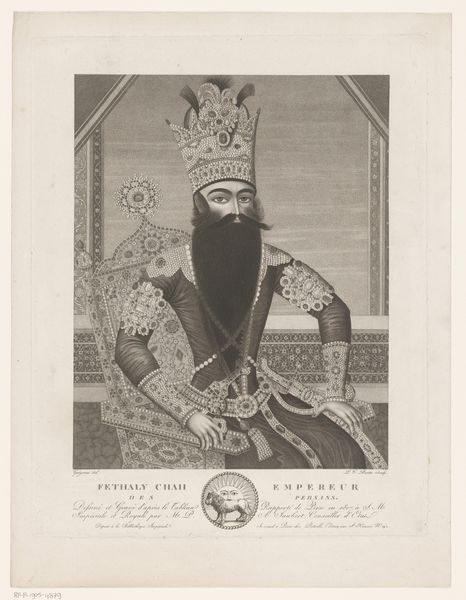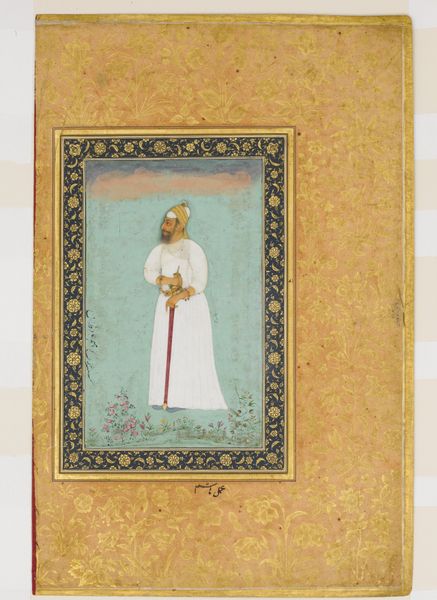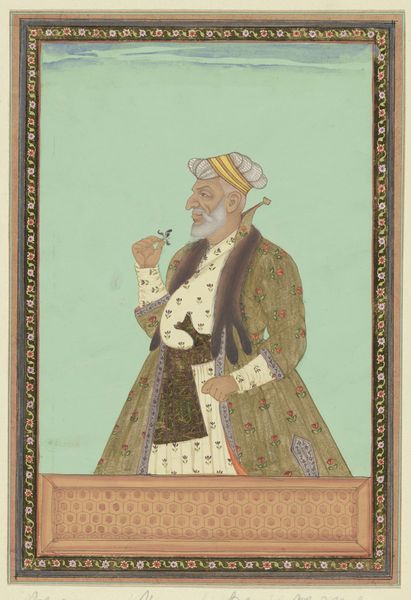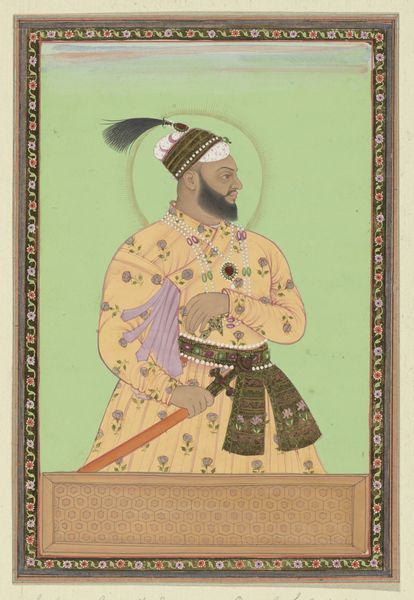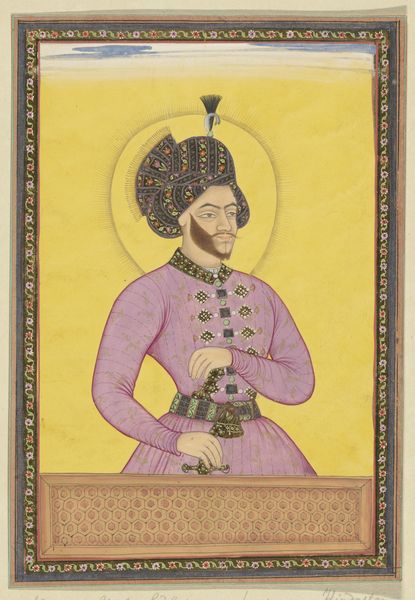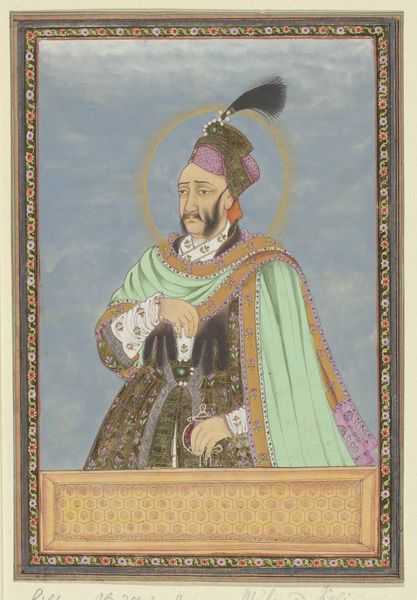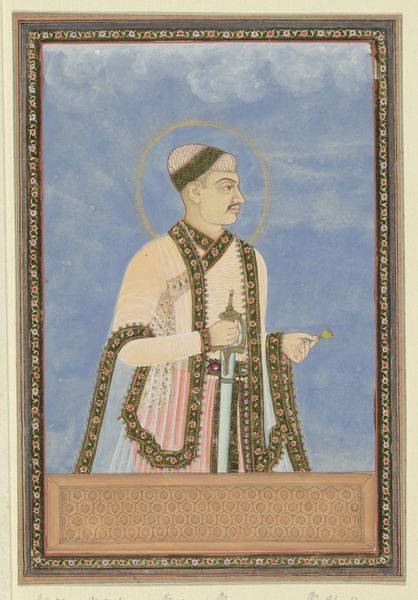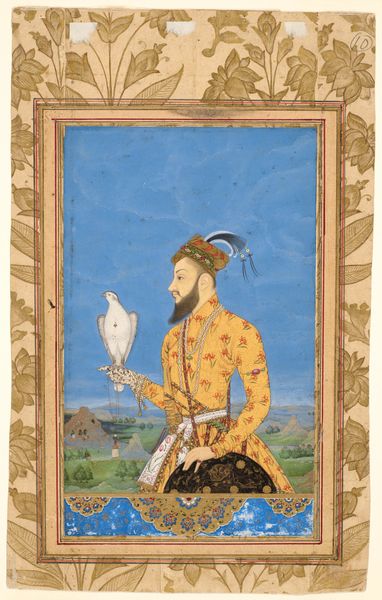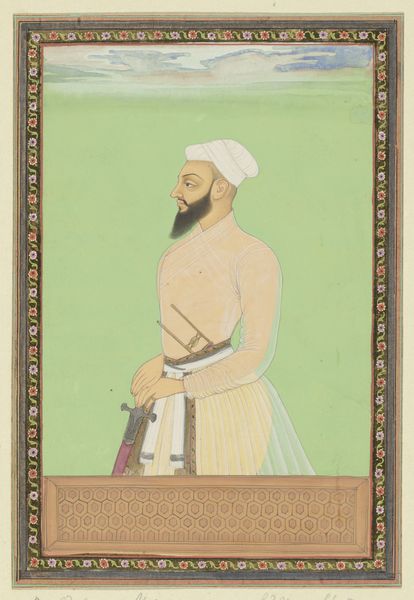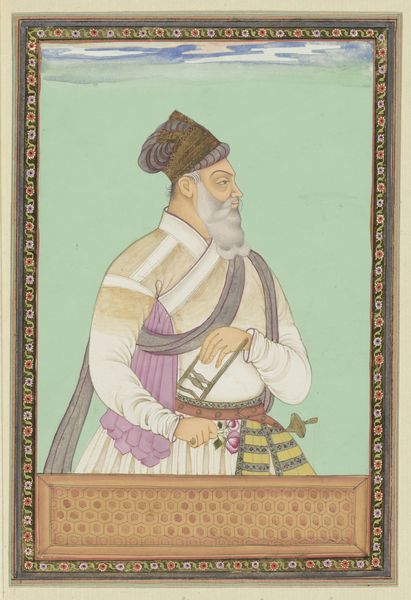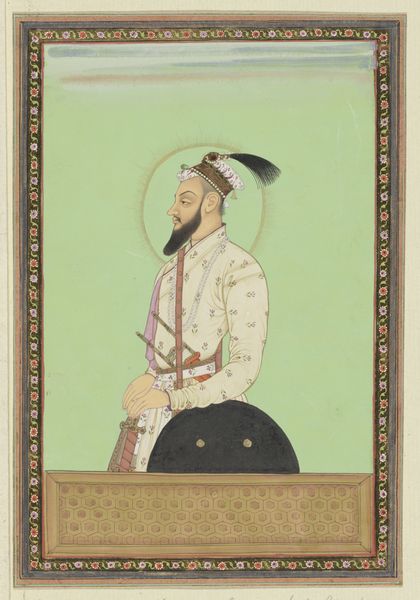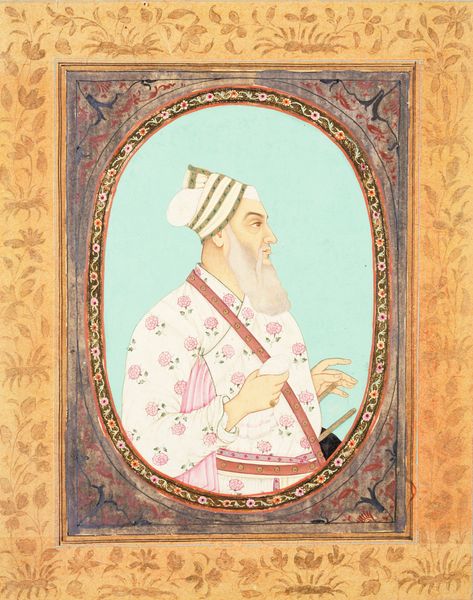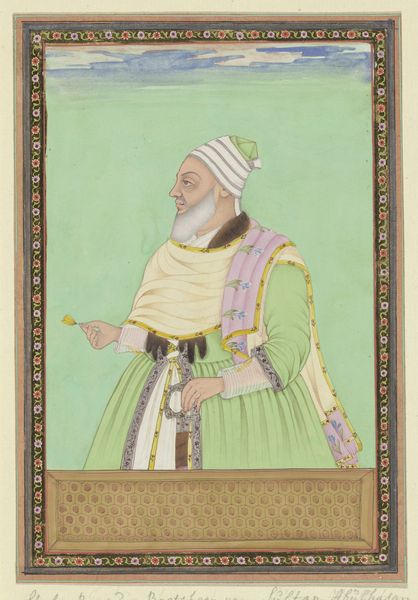![[Fath-Ali Shah, Painting that Once Belonged to Hmah [?] Saula, Uncle of the King.] by Luigi Pesce](/_next/image?url=https%3A%2F%2Fd2w8kbdekdi1gv.cloudfront.net%2FeyJidWNrZXQiOiAiYXJ0ZXJhLWltYWdlcy1idWNrZXQiLCAia2V5IjogImFydHdvcmtzL2Q3NWQwZDUwLWM0ZmEtNDRhZS05NzBjLWEzMDlmNzRhYWRiYy9kNzVkMGQ1MC1jNGZhLTQ0YWUtOTcwYy1hMzA5Zjc0YWFkYmNfZnVsbC5qcGciLCAiZWRpdHMiOiB7InJlc2l6ZSI6IHsid2lkdGgiOiAxOTIwLCAiaGVpZ2h0IjogMTkyMCwgImZpdCI6ICJpbnNpZGUifX19&w=3840&q=75)
[Fath-Ali Shah, Painting that Once Belonged to Hmah [?] Saula, Uncle of the King.] 1840 - 1869
0:00
0:00
photography
#
portrait
#
old engraving style
#
photography
#
orientalism
#
men
#
islamic-art
#
genre-painting
#
history-painting
#
watercolor
Copyright: Public Domain
This is Luigi Pesce’s photographic reproduction of a painting of Fath-Ali Shah, some time between 1818 and 1891. The original painting belonged to the uncle of the king. Paintings of rulers like this served as powerful tools for constructing and maintaining authority. Here, Fath-Ali Shah is shown in the trappings of power: his garments are richly decorated, his crown is bejeweled, and he holds what appears to be a sword. These elements tell us much about how the Shah and his circle wished to be seen: wealthy, refined, and powerful. What does it mean to reproduce this image photographically? Photography allowed for mass production of the Shah’s image and his power, so the image could become a symbol of Persian identity during a time of political change and Western intervention. Consider how the image, originally a unique painting, becomes a multiple, available to many. What happens to its aura? How might the image of a powerful leader function differently when endlessly reproduced?
Comments
No comments
Be the first to comment and join the conversation on the ultimate creative platform.
